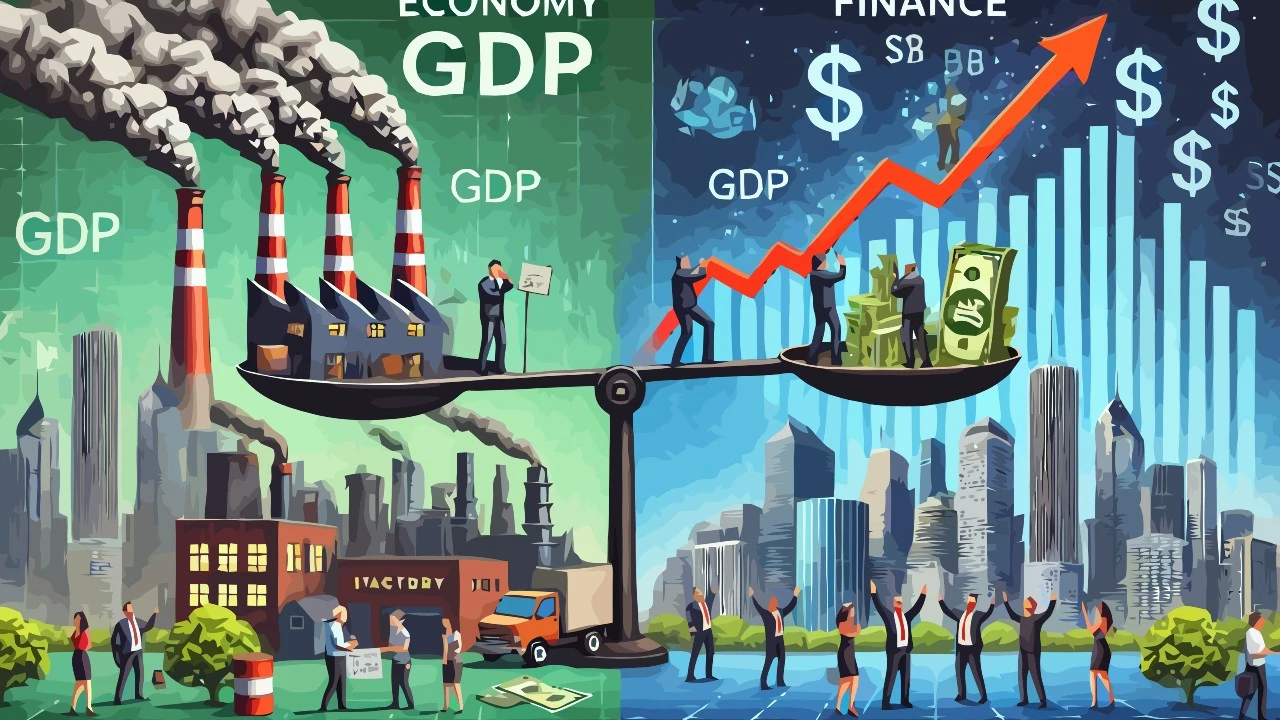In everyday language, economics and finance are often used synonymously, but in reality they are two distinct concepts. Economics concerns the production, distribution and consumption of goods and services, while finance deals with the management of money, investments and markets.
A country can experience a deep economic crisis while its stock market continues to grow. To better understand this phenomenon, let’s analyze some historical and recent examples.
Disclaimer:
The information provided does not constitute a solicitation for the placement of personal savings. The use of the data and information contained as support for personal investment operations is at the complete risk of the reader.
Contents
#1. Economics vs. finance: differences
Economics studies a country’s wealth production, unemployment, inflation, and GDP. Finance, on the other hand, is about capital flows, investment, and risk management. Financial markets are based on future expectations rather than current economic reality. This explains why stocks can rise while the real economy contracts.
A clear example is the 2008 financial crisis, in which markets collapsed following the bankruptcy of Lehman Brothers, but in 2009 they began an impressive recovery thanks to the interventions of central banks. This shows that finance responds to variables other than immediate economic data. Another key factor is liquidity: if investors have access to cheap money, they can continue to invest even in a negative economic environment.
In addition, many publicly traded companies operate globally and can earn profits even if their domestic economy is in crisis. Multinationals often generate revenues in different currencies, mitigating the effects of local recessions. This phenomenon is visible in the major stock market indexes, where the most influential companies do not always reflect the general economic performance of the country in which they are listed.
Technology also plays a critical role. Technology companies can thrive in times of economic crisis because they often provide essential or innovative services that remain in demand. Digitalization has allowed many companies to grow even when other industries have suffered.
Finally, a country’s monetary and fiscal policy can create a misalignment between the real economy and financial markets. Central banks can inject liquidity through quantitative easing, driving markets higher while economic growth remains stagnant.
#2. Markets rising but not the economy
In recent decades, financial markets have repeatedly recorded gains while economies were facing deep crises. This is because investors look at monetary policies, available liquidity and corporate prospects rather than the economic data of the moment. Furthermore, speculation and central bank interventions can inflate the value of financial assets, regardless of the real economic situation.
A case in point is the 2020 pandemic: while global GDP suffered one of the worst contractions in recent history and millions of people lost their jobs, stock market indices such as the S&P 500 and the Nasdaq set new records. This was possible thanks to the injection of liquidity by the Federal Reserve and other central banks, which kept interest rates low and purchased government bonds and bonds to stabilize the financial system.
Similarly, emerging markets have often seen financial growth despite economic hardship. For example, the Argentine stock market has shown increases even during times of debt crisis. This is because the value of stocks is determined by investors’ future expectations and monetary policy rather than by the immediate economic situation.
Another example is the boom of Bitcoin and cryptocurrencies during the global economic crisis. Despite uncertainty and recession, digital assets have attracted investors looking for alternatives to traditional markets. This shows how the financial world can operate according to logics independent of the real economy.
Pharmaceutical and biotech companies have also seen extraordinary growth during the pandemic, as investments in vaccines and treatments have made the sector very attractive to investors. This has helped keep the value of many stock indexes high.
#3. The case of Germany and the DAX
A clear example of this dichotomy is Germany. In recent years, the German economy has shown signs of stagnation, with declining industrial production and difficulties in the manufacturing sector. However, the DAX, the main index of the Frankfurt Stock Exchange, has continued to record new highs. This is because many listed companies are multinationals with strong exports, which benefit from the weakness of the euro and accommodative monetary policies by the ECB.
A key driver of the DAX’s growth is the presence of companies such as Siemens, Volkswagen and SAP, which operate in global markets and can benefit from economic conditions in other countries. In times of domestic economic difficulty, their foreign operations can offset the decline in domestic demand.
Furthermore, Germany has benefited from a monetary policy that has kept interest rates low, allowing companies to finance themselves at low costs. This has favored the expansion of listed companies, despite the economic problems that have hit the country. The growth of the DAX, therefore, is not necessarily an indicator of the health of the German economy, but rather of the competitive power of its companies globally.
The automotive sector also played a key role. Despite domestic economic difficulties, demand for luxury cars and electric vehicles supported profits for companies such as BMW and Mercedes-Benz, contributing to the growth of the DAX index.










Leave a Reply